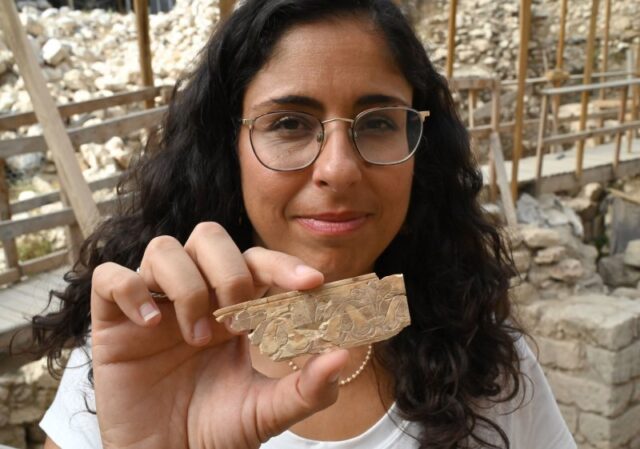Sept. 5 (UPI) — Israel Antiquities Authority said Monday that archeologists in Jerusalem discovered an assemblage of ivory plaques from the First Temple period, among the few found anywhere in the world.
The find was made by researchers from the authority and Tel Aviv University in the Givati parking lot in the City of David in the Jerusalem Walls National Park.
“These fine items were apparently inlaid in a couch-throne placed in a palatial structure,” said a statement from the authority. “The discovery … sheds new light on the power and importance of Jerusalem at the time of the Judahite Kingdom.”
The items will now be displayed for the first time at the 23rd Conference of the City of David Studies of Ancient Jerusalem on Sept. 13. The City of David Foundation funded the excavation.
“To date, we only knew of decorated ivories from the capitals of the great kingdoms in the First Temple period, such as Nimrud, the capital of Assyria, or Samaria, the capital of the Israelite Kingdom,” Yuval Gadot of Tel Aviv University’s Department of Archaeology and Near Eastern Cultures, and Yiftah Shalev of the Israel Antiquities Authority said in a statement.
“Now, for the first time, Jerusalem joins these capitals. We were already aware of Jerusalem’s importance and centrality in the region in the First Temple period, but the new finds illustrate how important it was and places it in the same league as the capitals of Assyria and Israel.”
Gadot and Shalev said the ivory finds move forward the understanding political and economic status of the city as part of global administration and economy. Made from elephant tusk, decorated ivories are among the rarest finds in archaeological assemblages.
“The prestige of ivory is also associated with the great skill required to work with it and create decorations,” Gadot and Shalev said. “The assemblage of ivory discovered in the City of David was probably imported, and originally made by artisans from Assyria. “The ivories may have come to Jerusalem as a gift from Assyria to Jerusalem’s nobility.
The researchers said afer comparing complete objects that appear on wall plaques from the palace of the Assyrian King Sennacherib at Nineveh, they believe the ivory plaques from Jerusalem were originally inlaid in a couch throne and had been situated on the second floor of the opulent structure.

COMMENTS
Please let us know if you're having issues with commenting.